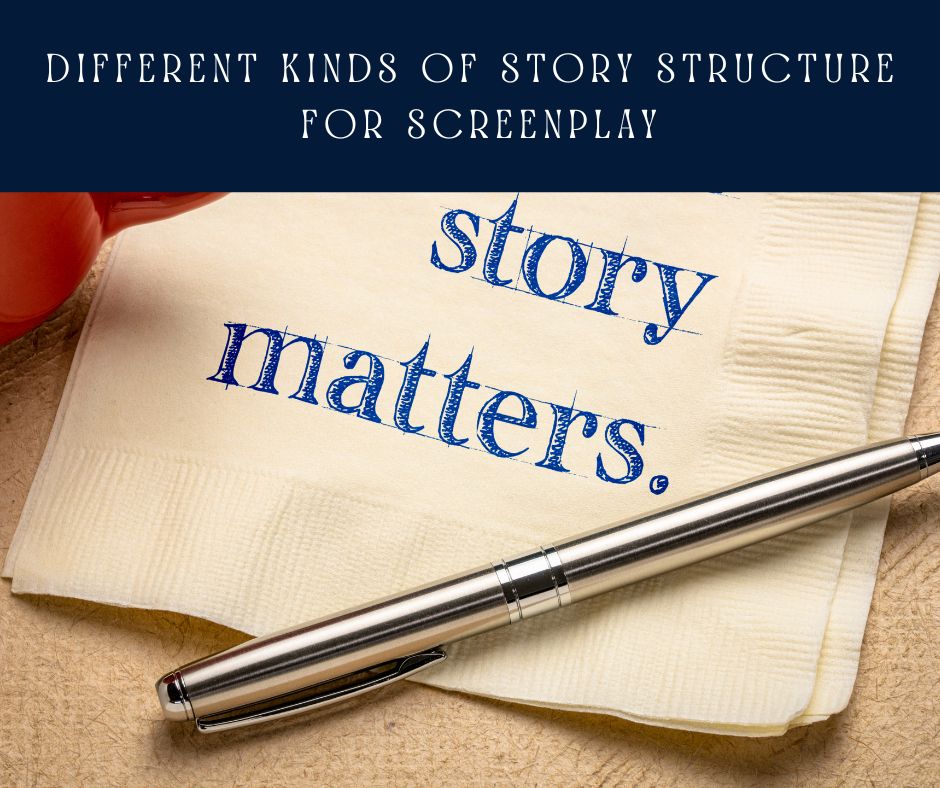Screenplays are traditionally written in one of these formats.
Three-Act Structure
The three-act structure is the most common story structure. It’s a set of three acts that each have a different function:
The setup
This is the first act of your screenplay, where you introduce your characters and setting. There’s usually at least one character whose personality or backstory is revealed here as well.
The middle
In this section, we see how our main character deals with challenges he or she faces in their life such as conflict. We also learn about their motivations for wanting to achieve certain goals. You might have an inciting incident in this part that sets up what happens next.
The climax
In this final act of your screenplay, things come to head for our protagonist(s). They face off against antagonists who try to stop them from achieving their goal before finally succeeding at reaching victory.
The Hero’s Journey
The Hero’s Journey is a pattern of narrative that describes the typical adventure of the archetypal hero. It was first described by Joseph Campbell in his book The Hero with a Thousand Faces, and later popularized by T.H. White in his fantasy novel The Once and Future King (1958).
The journey begins when an ordinary person who starts out on their own journey meets someone who gives them guidance or inspiration to become something great—a king, queen, warrior or wizard; some kind of hero! This guide helps them through many obstacles along their path until they reach their goal at last.
Save the Cat!
The Save the Cat! is a common story structure for screenplays. It’s also known as the “initiative” or “beginning.”
The inciting incident occurs at the beginning of your script, and it sets up everything that follows. It can be any event that happens in your story—a murder, an accident, a robbery—but it must be worthy enough to excite audiences so they want more (see below).
In this section you’ll learn how to create interesting scenes using three different types of plot points: one-act plays; two-act plays; and four-act plays.
Who Wants to Be a Millionaire?
The screenwriting book “Who Wants to Be a Millionaire?” is written by Michael Hauge, and it’s based on his experience as a screenwriter. The premise of this book is that there are seven core story structures that can be used for any genre or movie, whether it be comedy or drama.
The first two chapters cover what makes for good characters and how those characters interact with each other in order for us as the audience members (and readers) to connect with them. He also talks about how important it is for us as writers not just to tell our stories through dialogue but also through action scenes where our characters react naturally–and it’s often these things which give them their own personality!
Monomyth
The monomyth is a term coined by Joseph Campbell and refers to the universal story pattern that occurs across cultures and time periods. A hero’s journey is about a person who leaves the ordinary world and goes on an adventure. In his book The Hero with a Thousand Faces, Campbell defined the monomyth as “a universal mythic theme underlying all myths, religions, arts & sciences of man” (Campbell 543).
The hero’s journey consists of five stages: departure from the known world; initiation into new skills; crossing over into death or rebirth; return with wisdom gained from experience; and reintegration with community or family.
Paradigm
A paradigm is a model of a system. In other words, it’s a way of thinking about something. Paradigms are patterns of thought and behavior that are used to interpret reality and make sense out of things. There are two different types:
- The first kind is called an organizing framework or schema. These frameworks help us understand how things work together in order to predict outcomes in different situations; they provide us with frameworks for understanding our world so we can make predictions about what will happen next based on past experiences with similar situations before now happening again soon enough.
- The second kind consists mainly of theories about how things work within those organizing frameworks—they’re often called hypotheses because they’re created by scientists who want answers from their research into other fields such as biology or physics but also medicine too since there aren’t really many ways yet besides trial-and-error testing methods which don’t always yield results accurately enough sometimes either due lack funding availability etcetera
Snowflake Method
The Snowflake Method is a way to write a screenplay. It’s based on the idea that you should start with a single image, and then build the story around it.
For example: In “Thelma & Louise” (1991), two women escape from an abusive relationship by stealing their car, getting into an accident and killing one person. You could describe this scene in detail: how they got out of town; how they drove through fields; what happened when they ran into someone else driving at night; etcetera… But then your story wouldn’t have much going for it if there wasn’t some sort of conflict between them and their pursuers—which means you’d have to come up with some kind of problem for them to solve (in this case, finding another route) or face consequences for breaking laws (getting caught).
Screenplays are traditionally written in one of these formats.
Dramatic format
This is the most common format, and it’s what you see in most movies today. It involves three acts or acts with a beginning, middle and an end. Each act has a different character who acts as the protagonist and each act ends on a cliffhanger where something big happens that will lead into the next scene.
There are also minor characters who play important roles but don’t have enough screen time for their own stories; these characters may appear briefly at the beginning/middle/end of each act or even just once throughout all three acts if there aren’t enough scenes to tell their story individually.
Suspenseful thriller format
The suspenseful thriller format was popularized by Alfred Hitchcock’s Psycho (1960), which had five acts instead of three like most films nowadays do—though this isn’t always true! Other examples include Poltergeist (1982), Scream 2 (1996) and Seven Psychopaths (2012). In this type of screenplay structure there’s usually more than one villain who wants something bad done by our protagonist(s): maybe someone stole something valuable? Or maybe someone killed their parents–and now they need revenge?!
Conclusion
A screenwriter’s job is to tell a story, and that process can be broken down into three main stages: the inciting incident, the rising action, and the climax. In order for a script to be successful, it must follow these three steps or something equally compelling will happen: an audience will leave feeling dissatisfied or bored with their experience at the cinema or on television. With this knowledge in mind, writers should consider which format best suits their project before beginning work on any screenplay.




